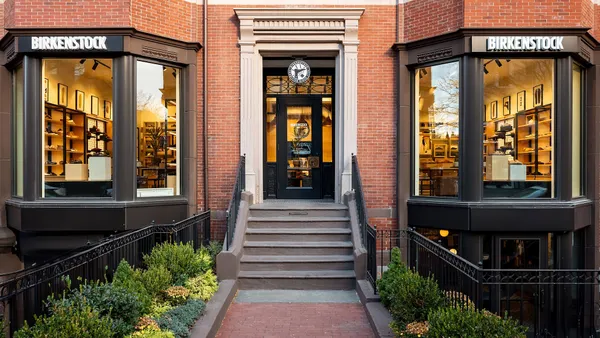Dive Brief:
- Gymboree on Tuesday named Daniel Griesemer to fill its vacant CEO spot effective immediately. For nearly five years, Griesemer led teen and young adult apparel retailer Tilly’s as CEO, according to a company press release.
- Griesemer left Tilly’s in fall 2015 and it was the last company he served with before the Gymboree appointment, according to his LinkedIn page. He replaces interim CEO Mark Weikel, who will continue as a director for the company’s board. Griesemer ultimately takes over the chief executive slot from Mark Breitbard, who stepped down in January and now heads Gap’s Banana Republic division. Gymboree did not respond to a request from Retail Dive for more information about the management changes.
- Griesemer will take over a company with a debt load of more than $1 billion, much of it related to Bain Capital’s buyout of the children’s apparel retailer in 2010. An even more pressing challenge for Griesemer: Gymboree is reportedly looking to restructure its debt and operations in Chapter 11 bankruptcy.
Dive Insight:
In the release announcing his appointment, Gymboree executives said Griesemer's "proven leadership in the specialty-store sector, combined with his operational and financial experience, make him an ideal person to lead Gymboree into the future as the team works to establish a sustainable capital structure and position the company for long-term success."
To be sure, Breitbard's successor will likely oversee a painful restructuring at the company as it grapples with a huge debt load and runs up against a multimillion-dollar interest payment in June. In the best-case scenario, Gymboree could emerge from bankruptcy as a going concern with a continued retail presence, but it will likely be a different, smaller company.
Although experts that Retail Dive has spoken with say the June date could be extended, restructuring and bankruptcy seem inevitable. Credit rating firm Fitch Ratings added Gymboree to its “Bonds of Concern” list in January. Bloomberg and Debtwire have reported that the company has talked with consultants to guide it through restructuring.
In April, Bloomberg reported that Gymboree was preparing a Chapter 11 filing ahead of the June deadline. Bloomberg noted in its report that Bain could ultimately turn control of the company over to Gymboree's lenders.
Gymboree has been facing the same challenges as many mall-based apparel sellers. E-commerce as well as a wide array of other competitors have cut into its sales and traffic. Fellow children’s retailers Carters and The Children’s Place, for example, have reported net sales increases and positive profits while Gymboree has logged losses and sales declines.
Magnifying Gymboree’s problems is the debt the company inherited from the leveraged buyout by Bain. “Gymboree does seem like it’s over-leveraged right now,” Joel Levitin, a partner with Cahill Gordon & Reindel bankruptcy practice, said in an interview with Retail Dive. “There’s too much debt to support its operations."
With cash from the retail business going to pay down its financial obligations, Gymboree is poorly positioned to compete with others who are able to make investments in their stores, e-commerce capabilities and other capital-intensive efforts. In other words, the company could be facing a death spiral if it can’t get some debt relief and an infusion of cash.
Earlier this month, The Wall Street Journal reported that the company was planning to close 350 stores in bankruptcy, a signal that the company could emerge from bankruptcy as a going concern. A worse fate would be to go the way of The Limited and Wet Seal — retailers that have recently shuttered all their stores amid bankruptcy filings.













